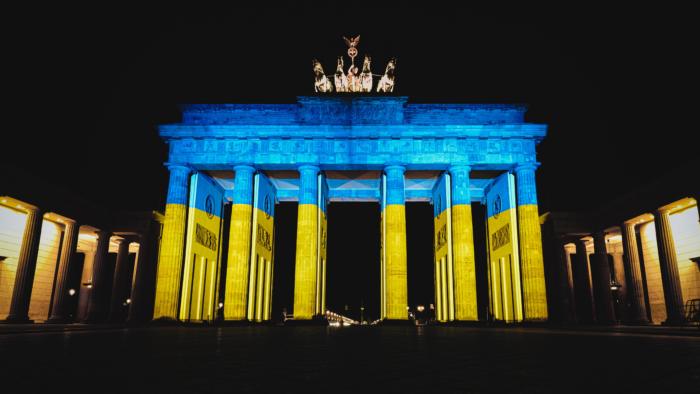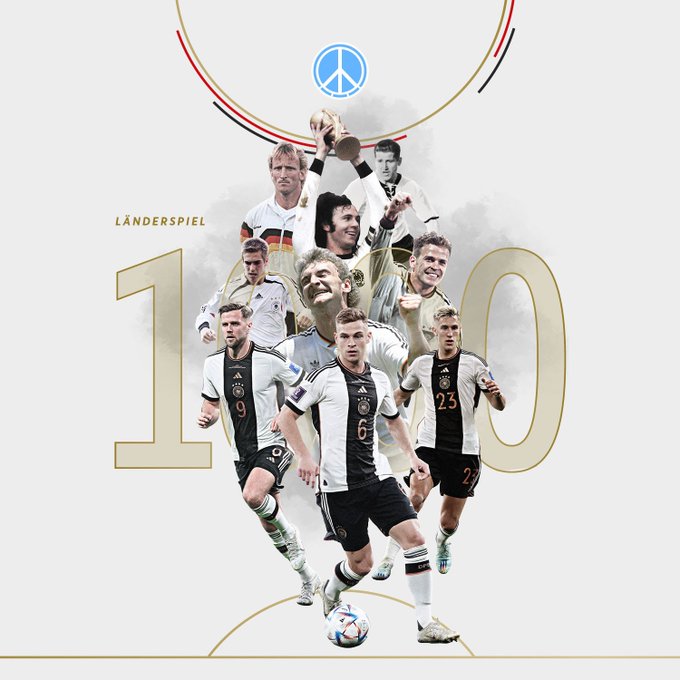When friendlies mean peace
By Albercht Sonntag, professor at ESSCA and member of the Scientific Comitee of Sport and Citizenship.

The international football calendar is being increasingly densified, leaving little room for those non-competitive matches that are traditionally referred to as “friendlies” and are considered “a waste of time” by a growing number of decision-makers in governance bodies and media.
It is an error to dismiss them as useless. These matches are first and foremost encounters, and if many of them are indeed more than anodyne, they have no less a symbolic dimension. To play with each other is an act of exchange, of shared pleasure, of trust. It’s a statement about equality before the laws of the game. And in the case of football, which is so often (if out of context) compared to “war minus the shooting” and the vocabulary of which is rife with bellicose terms, a friendly is also a declaration or confirmation of peace.
Germany are just about to play the 1000th match of its history. Quite a milestone. In Europe, only England have done better (1043), having started 26 years earlier, with the famous (and goalless) first “international” ever against Scotland.
At the moment when Germany created a national team, in 1908 (starting with a 3-5 defeat against Switzerland), it was a “Kaiserreich” under Prussian leadership (which by the way explains why black and white are the traditional colours of the Nationalmannschaft). Ever since, the team has been overloaded with symbolic weight. Not only in the numerous international competitions – in which it did rather well, overall – but also in certain “friendlies”, which were organised under the sign of peace.
Three of them particularly deserve to be mentioned.
Thirst for recognition
The first one is match number 199. It took place on 22 November 1950.
Switzerland are the first to accept playing a “friendly” in a country that has been banned from international football for long years and excluded from the first post-war World Cup. Weather conditions in Stuttgart are miserable on that autumn day, but in the venue built for 60,000 spectators – and under the name of “Adolf-Hitler-Kampfbahn”, a crowd of 110,000 people crammed themselves into the stadium, covering every inch of space until the sidelines. In terms of security, kicking off the match is nothing short of irresponsible, but the collective thirst for recognition and symbolic reintegration into the international football community is just too strong. As if the new-born Republic finally had a kind of baptismal ceremony.
Need for détente
Five years later, match number 230, takes place in the summer, on 21st August 1955.
Everything has changed. The Federal Republic is not only busy accomplishing its “economic miracle” of the post-war decades, but the Nationalmannschaft has even won, to everybody’s surprise, the 1954 World Cup in Switzerland. The Cold War has pushed NATO to accelerate Western German membership and, consequently, has allowed the new member to start rearmament, as of May 1955.
There is, however, one painful open question: what will happen to the roughly 15 000 prisoners of war, soldiers and civilians, who are still held, ten years after the war, in the Soviet Union’s forced-labour camps under, say, “problematic” conditions?
Chancellor Konrad Adenauer is planning a visit to the Kremlin in order to request and negotiate their liberation. And football tests the ground, just before his trip, with a “friendly” played by the reigning world champions in Moscow. A good opportunity to see how the spectators will behave. The teams are acutely aware of the symbolic nature of their mission. Both enter the ground carrying bouquets of flowers, which they distribute to the crowd. Finally, there is no incident to deplore, quite the contrary. Both the Kremlin and the Chancellery are relieved and move on to welcoming Adenauer for the talks. Between October and January, all remaining prisoners return home.
Statement of solidarity
Match number 1000 will take place on 12 June 2023, in Bremen. In order to mark this exceptional moment in a 115-year history punctuated by many a milestone engraved in popular collective memory, the German federation has had the elegant idea to invite Ukraine. The choice was made, according to its president, Bernd Neuendorf, “in order to send a clear signal in favour of peace and understanding, and against the war.”
A few days ago, at an event in early May, I bumped into Ukrainian football legend Andriy Chevtchenko, passing through Paris. When I asked him what this forthcoming match meant to him, he told me he didn’t care “whether this is match 1000 or 998, as long as the German federation reverses the match revenues as announced to social and humanitarian charities working in Ukraine”.
He is of course not totally wrong: the organisation of a football match, whatever its symbolic weight, does not allow to win an armed conflict against a powerful aggressor.
At the same time, an invitation to such a “friendly” that is not without prestige and a degree of solemnity, gives a concrete meaning, accessible to all, of a commitment of solidarity with the nation to which is addressed. That’s not without significance.
It seems that friendlies may well be « useless » in most cases, but some of them are more than meaningful, no matter the score.
Cet article est déjà paru : Matches amicaux, rencontres de paix : trois sur mille – Alliance Europa (alliance-europa.eu)
Pour aller plus loin :
Guerre en Ukraine, la diplomatie sportive en ordre de bataille : Par Lydie COHEN, Membre Comité Scientifique, Think tank Sport et Citoyenneté. (7 mars 2022)











 MEMBERSHIP
MEMBERSHIP CONTACT
CONTACT FACEBOOK
FACEBOOK